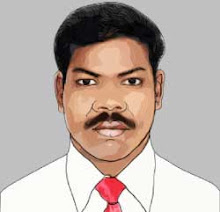Brand New Delhi: Let Political India Move Out of the Capital
26 Mar 2004, 0000 hrs IST, Sauvik Chakraverti
Gerhardt von Hoffman was in charge of the privatisation of the properties of the East German government in East Berlin. We spent a fortnight together in Goa during which he said a very interesting thing, namely, that since there is no profit and loss in government calculations, the state is a very inefficient user of real estate.
In his Utopia, he said, the state would be constitutionally required to rent properties. That alone would yield an efficient real estate market. After meeting Gerhardt, a new vision unfolded in my mind, a realisation that we could also privatise state property.
This vision seizes me every time I am in Delhi, for in Delhi almost half the city belongs to the state. If we decide to privatise state property, and use Delhi as an example for the purpose, what benefits can this yield for the average Dilliwalla? And what lessons can be derived for the rest of India? The first great benefit that this approach will bring is that, by taking such a path, Delhi will finally be possessed of a Central Business District. Every great city has one, but Delhi doesn't. The Mughals built Chandni Chowk; the Brits built Connaught Place; but both these markets are not CBD material today.
How can the privatisation of state property yield Delhi a CBD capable of handling globalisation? Rajpath can be privatised. Every sarkari bhawan there can take 10 shopping malls and have enough room for parking besides. The street name can be retained so that we all know that the raj now is of the market and not the Central planner. This splendid, broad avenue can be the central shopping and nightlife district and breathe fresh life into Delhi's commercial spirit. How can this be brought about? We must think ahead. Globalisation means cities competing for commerce. Cities are the hubs of world business.
If Delhi has to be such a city, it will require a CBD. But globalisation also means the end of the dominant state. In commercial societies, capital cities are small. Washington DC, Bonn, Canberra, Berne, Ottawa... there are so many examples. If Rajpath is to be privatised, this means we must also shift the Capital out of Delhi to some smaller town. Such a move will also mean that the diplomatic community will have to shift out of Delhi too, and the prime spaces occupied now by foreign embassies can be used by the market. Then, Shantipath can be the central office district, with high-rises belonging to every great multinational, and this name, too, can be retained showing that we Indians seek peace through trade.
Shifting the Capital out of Delhi will also yield huge amounts of space currently occupied by sarkari babus . All the Bapa Nagars and Kaka Nagars and R K Purams can be privatised and sold to the market — that is, to the citizenry. The bungalows of Lutyens' Delhi could be left for the commercial as opposed to the political elite. The question arises as to what should be done with the money that this privatisation will yield.
I propose that it be used to shore up the city's transport infrastructure. Let 20 250-km-long eight-laned expressways emerge as 'spokes' from Brand New Delhi and connect all the surrounding towns so that a vast amount of space is opened up for residence and commerce. For example: One spoke to Dehra Dun with 10 satellite towns on the way; another to Alwar; one to Jaipur, one to Agra, one to Chandigarh, and so on. In this way, hundreds of satellite towns can come up (and not just NOIDA and Gurgaon). There is enough land for all; what is required to get the land into service are roads. They say 'every great city sits like a giant spider on its transportational network'.
Let Brand New Delhi be such a city. New Delhi certainly isn't. It sits like a blob of jelly on the map, bloating up every year. And let rail links parallel the roads. We can have 20 lines of the Delhi Metro extending parallel to the expressways. In great cities, the underground railway goes overground outside city limits and connects up the outlying towns. Today, the Delhi Metro does not plan to link even Gurgaon.
The airport is not on the route plan of the metro. What about the grand Viceregal Palace on Raisina Hill that we now call Rashtrapati Bhavan? I believe the entire area would be very well suited to make the world's greatest casino. I would welcome the idea of selling it to some casino firm for, in Brand New Delhi, the electoral sweepstakes should not be the only form of gambling allowed, as is the case in New Delhi. If half the profits from the casino are given to the city coffers, then Brand New Delhi may also be tax-free. They say political change is 'loquocentric': It happens if we talk about it. In which case, we must all talk about these ideas: First, the privatisation of state property; and second, the idea of a new capital town by getting the state out of Delhi.
If enough people talk about these ideas, then only will we be able to say that their time has come. As a lesson for the future, let us now be very careful about how much property we allow the state to accumulate. Here's to a lean state and a lean government unobtrusively performing its chosen tasks well. Let the state be in a small government town and let every city blossom. As the poet put it: "Into such a haven of freedom, my Lord, let my country awake!"
http://timesofindia.indiatimes.com/articleshow/msid-582269,flstry-1.cms

